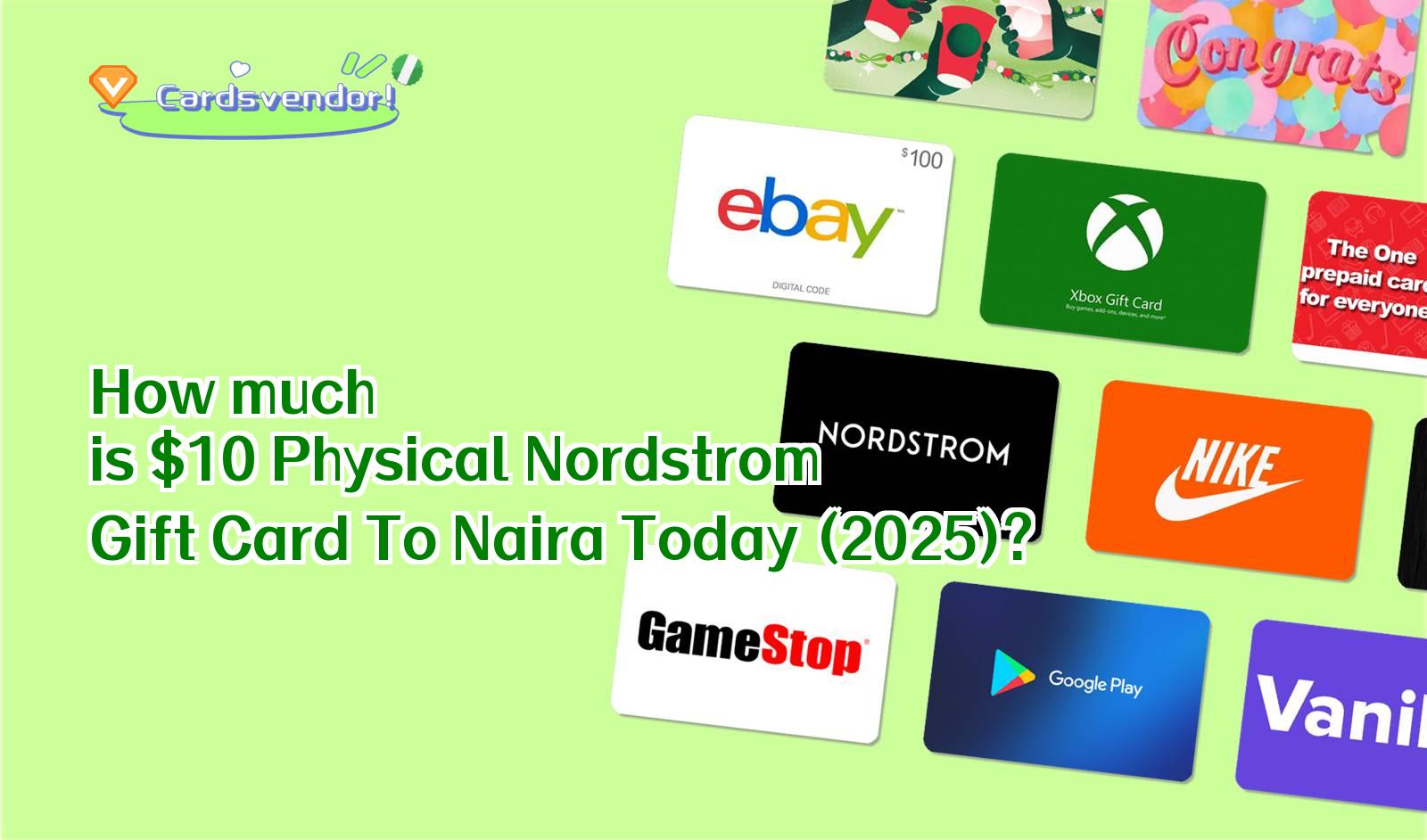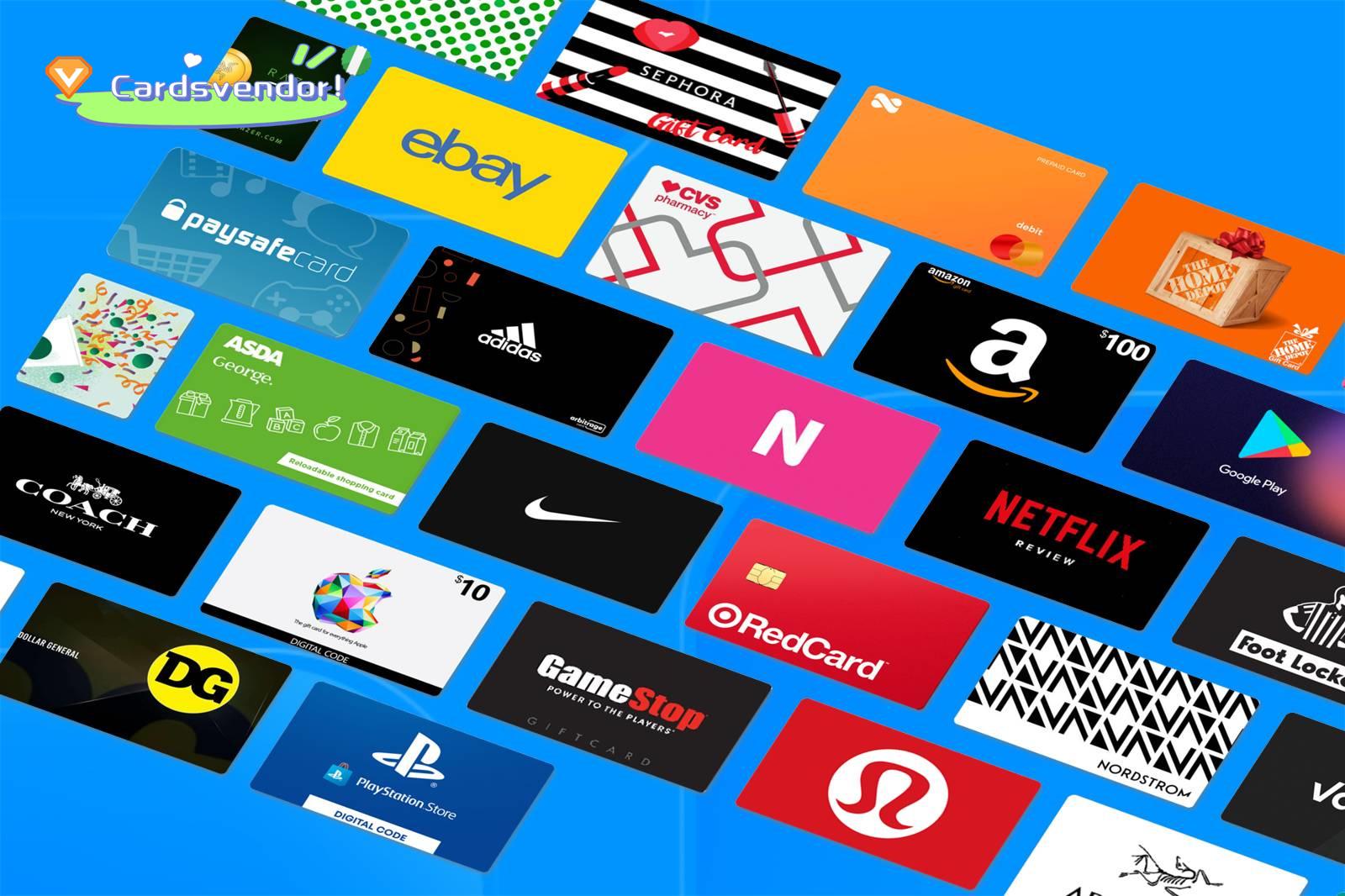
Exploring Nordstrom Gift Cards
A Nordstrom Gift Card is a pre-paid card that allows customers to shop at Nordstrom and Nordstrom Rack stores or online. It’s a convenient way to give someone a shopping experience, as they can choose their own purchases. It comes in various denominations and can be used for both regular and sale items. The card is reloadable and can be used to receive cash back or Nordstrom Notes for future purchases.
How much is a $10 Nordstrom Gift Card Equivalent in Nigerian Naira?
$10 Nordstrom Gift Card to Naira: Today’s Exchange Rate
As of October 2024, this is the best exchange rate for USD gift cards in Nigeria. Currently, a 10USD Nordstrom gift card is valued at 10,500 to 14,500 Naira on Cardsvendor. However, please be aware that exchange rates may fluctuate. Therefore, if you are considering redeeming or selling your gift cards, make sure to check the latest rates on the Cardsvendor platform to ensure you get the most up-to-date value.

In which countries can Nordstrom gift cards be used?
Nordstrom gift cards are accepted in various countries worldwide. They can be used in the United States, Canada, and Mexico. In the U.S., they are valid at all Nordstrom stores, Nordstrom Rack locations, and Nordstrom.com. Canadian customers can use them at all Nordstrom and Nordstrom Rack locations in Canada, as well as at nordstrom.ca. In Mexico, Nordstrom gift cards are accepted at Nordstrom Mexico stores and nordstrom.com.mx. However, the availability of certain products may vary by region. It’s always recommended to check with Nordstrom’s customer service for the most up-to-date information.
What can I do with my Nordstrom gift card?
To use a Nordstrom Gift Card, simply present it at checkout. You can use the entire balance or part of it. Enter the card number, PIN, and expiration date when prompted. For online purchases, enter the card details during checkout. Unused balance will remain on the card for future use.
Factors that Determine Nordstrom Gift Card Rates
Brand Reputation: Renowned brands command higher prices due to perceived value.
Fees: Activation, monthly, and inactivity fees can influence overall cost.
Market Conditions: Economic fluctuations can impact the availability and pricing.
Expiry Dates: Cards without expiry may cost more due to reduced risk.
Reload Options: Cards that can be reloaded are often more expensive.
Issuer’s Pricing Strategy: The issuing company’s policies on markup can vary significantly.
Volume Discounts: Bulk purchases may receive discounts.
Third-Party Resellers: Prices can vary based on the reseller’s inventory and markup.
Design and Packaging: More elaborate designs and packaging can add to the cost.
